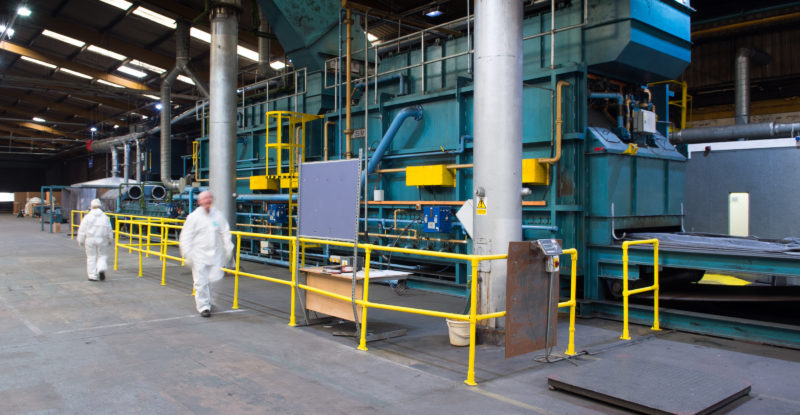Carbon Fiber 3D Printing, Part Eight: Recycling Carbon Fiber
Now that we’ve covered the roots and present state of carbon fiber 3D printing, including current research, we should take a look at where carbon fiber goes to die—or, to put it less morbidly, where it goes at the end of its lifecycle.
The carbon fiber market is currently booming, with a great deal of demand being generated by aerospace manufacturers, as well as for military, wind turbine and automotive production applications. According to MarketsandMarkets, the compound annual growth rate of the industry between 2019 and 2029 is about 11 percent. So, where will all of this material go when it has outlived its usefulness?
Based on one estimate, roughly 30 percent of carbon fiber becomes waste during its lifecycle. At the moment, recycling carbon fiber is somewhat limited, but carbon fiber reinforced plastic (CFRP) can, theoretically, be recycled. CFRP parts are heated up to 400 °C – 600 °C in a process called pyrolysis. The polymer matrix is completely burned away, and the recovered carbon fiber can be reused, chopped or milled, but not for structural applications.
A newer method for recycling carbon fiber, called solvolysis, is emerging, however, that relies on a solvent to dissolve the polymer resin while retaining the physical properties of the carbon fiber. The salvaged carbon fiber cannot be easily processed into woven carbon fiber, but can be compounded with thermoplastics into pellets for injection molding or 3D printing, as well as filament for 3D printing. In particular, one startup called Shocker Composites, has tested carbon fiber recycled using solvolysis using Big Area Additive Manufacturing from Cinncinnait Inc and Large Scale Additive Manufacturing from Thermwood (both of which are discussed in part six of this series).
As emissions standards improve within the aviation and automotive industries, in the face of catastrophic climate change, carbon fiber is increasingly being sought after to replace metal components and reduce the weight of vehicles, thus limiting fuel consumption and emissions. One analysis found that an aircraft in which 50 percent of the structure were made from CFRP parts would cut emissions by about 27,000 tons over the course of 10 years. A car made up of 17 percent CFRP parts would reduce emissions by about five tons over 10 years.
Of course, emissions could be reduced even further by cutting down flying, driving, and overall production and consumption in industrial countries altogether, but if society continues these practices and carbon fiber is used to replace metal parts, there are more sustainable forms of carbon fiber than what is currently used.
As mentioned in part one of this series, 90 percent of the world’s carbon fiber is made from polyacrylonitrile (PAN), a polymer derived from petrochemicals. The process to make PAN-based carbon fiber is about 14 times as energy intensive as forging steel. Researchers are now looking at methods for replacing PAN with polymers made from naturally derived sugars, such as waste plant materials.
One team at the Department of Energy can convert plant waste into 3-hydroxypropionic acid (3-HP), which is then turned into a bioplastic known as acrylonitrile, which can be used to make carbon fiber. Not only is this material not made from petrochemicals, but no excess heat or toxic byproducts are generated from the process. One study found that the use of lignin derived from paper mill waste as a precursor to carbon fiber could reduce the lifecycle energy use of a CFRP automotive part by 30 percent.
If we are going to continue using plastic, the work to shift to bioplastics and adequate recycling systems will need to have begun 20 years ago. That said, it is obviously urgent that we switch to biopolymers now. And, if we plan on making more heavy transportation vehicles, we need to switch to bio-based carbon fiber as soon as possible, as well.
Subscribe to Our Email Newsletter
Stay up-to-date on all the latest news from the 3D printing industry and receive information and offers from third party vendors.
Print Services
You May Also Like
New Business: Temporary, Migratory, & Modular 3D Printed Architecture
If we look at potentially emerging 3D printing businesses, then architecture has not been fully explored. Yes, there is a lot of house 3D printing going on worldwide. From deployable...
3D Printing News Briefs, April 19, 2025: Material Extrusion Standard, Metal Powder, & More
In today’s 3D Printing News Briefs, we’re covering a proposed standard for material extrusion, before moving on to business and metal powder. We’ll end with a commercial store’s robotic 3D...
Japan Unveils World’s First 3D Printed Train Station
Japan is now home to what we believe is the world’s first train station built with 3D printing technology. Located in Arida City, just south of Osaka, the new Hatsushima...
restor3d Raises $38M to Expand 3D Printed Orthopedic Implants
Backed by $38 million in new funding, restor3d is pushing ahead with the launch of four personalized implant lines, set to roll out in 2025 and 2026. This latest venture...



























